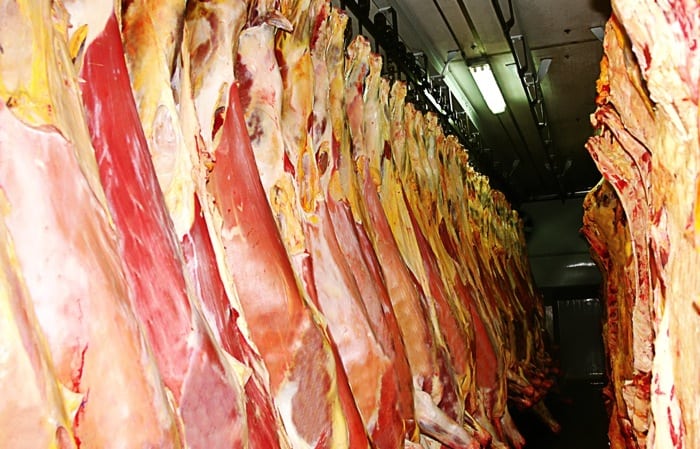Chicago | Reuters – Chicago Mercantile Exchange live cattle futures rose sharply on Friday, lifted by better demand from beef packers who were bidding more aggressively to buy steers in cash markets, traders and analysts said.
Technical buying also supported cattle futures, which broke out of a relatively narrow trade that had defined the market for a few weeks.
CME October live cattle gained about 2 percent or 2.050 cents to settled at 112.000 cents per pound, finishing above its 200-day moving average for the first time in months.
Read Also

U.S. grains: Wheat futures rise on supply snags in top-exporter Russia
U.S. wheat futures closed higher on Thursday on concerns over the limited availability of supplies for export in Russia, analysts said.
Front-month August live cattle gained 2.075 cents to 110.675 cents. Live cattle prices extended more modest gains at midmorning after talk circulated that several major beef packers raised cattle bids to $110 per cwt, up from $109 earlier this week.
“Futures began to take off,” said Archer Financial Services broker Dennis Smith.
After the close of futures trading, feedlots started to sell cattle to packers at mostly $114 per cwt, up from trades a week ago of $112.
Fears earlier this week of lower cash trades had weighed on the futures market.
CME September feeder cattle futures were up 1.675 cents to $153.025 cents.
Lean hog futures were mostly higher, with several contracts including most-active October hogs surging on short-covering after prices tumbled to contract lows earlier in the session. October hog futures finished up 1.125 cents to 50.775 cents.
News that Mexico and the United States could reach a NAFTA deal next week helped to trigger the short-covering, as did news that China had culled 1,000 hogs because of the country’s first outbreak of African swine fever.
Both Mexico and China imposed tariffs on imports of U.S. pork as part of the simmering trade war with the United States.
“Those two items were enough,” Smith said of the China and Mexico news. “We were oversold and discounted, and that brought in some good buying.”













